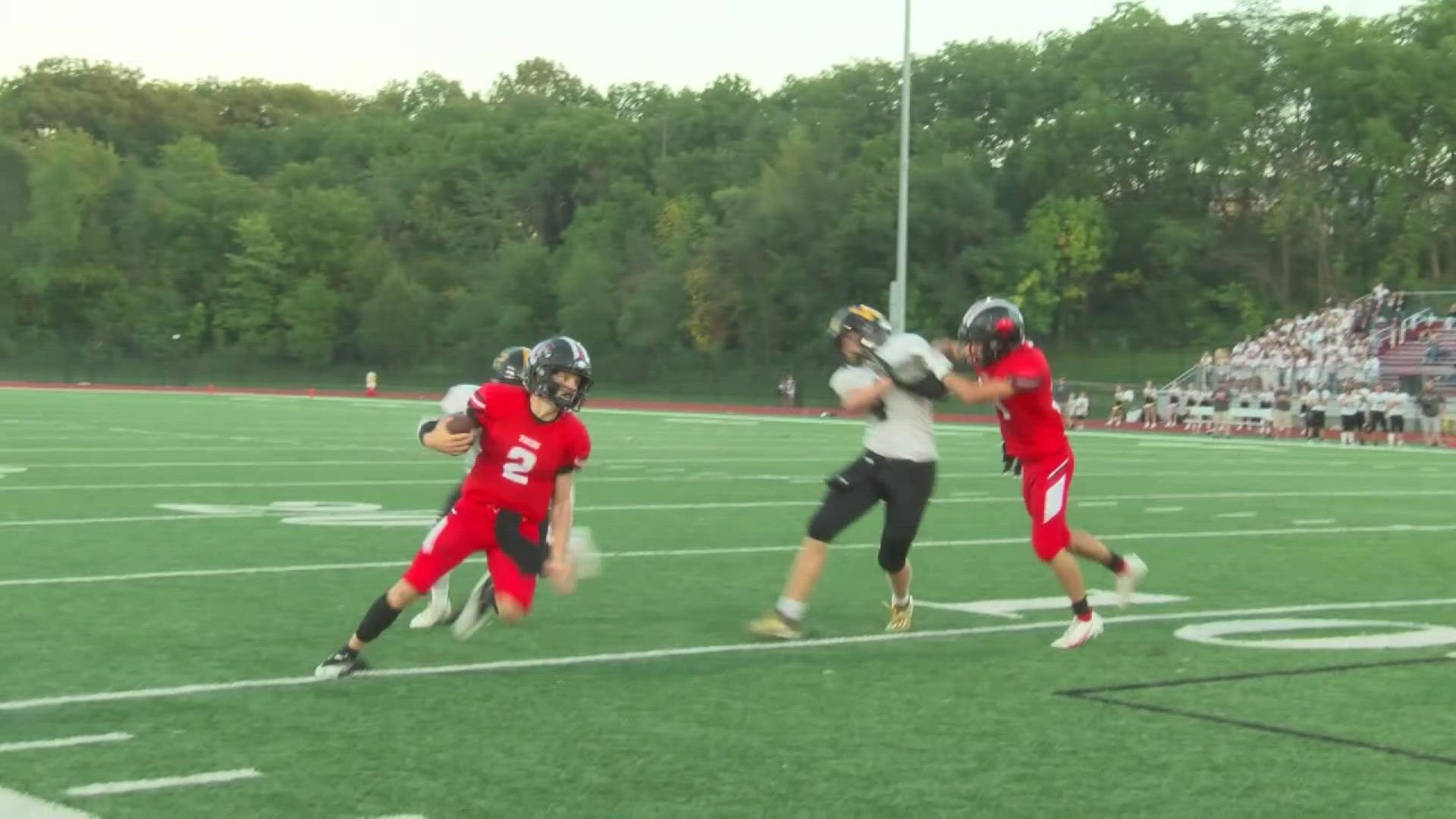URBANDALE, Iowa — Concussions in football are not new.
But how concussions are handled recently became a topic of discussion across the country after Miami Dolphins quarterback Tua Tagovailoa suffered a concussion in a game against Cincinnati on Sept. 30.
Some argue he shouldn't have even played in the game in the first place due to the fact that he hit his head hard on the turf in another game just days before and stumbled back to the huddle.
Local 5 spoke with local concussion experts to break down the science of what happens to the body as a result of concussion — and how each step of protocol plays a key role in the process.
So what happens to our bodies when we experience a concussion?
"What a concussion really is is a metabolic injury to the brain," said Dr. Shawn Spooner, a sports medicine physician at Unity Point Sports Medicine and Concussion Center.
Spooner said one way to think of it is like buffering internet — that's essentially what your body is experiencing when concussed.
"The brain takes an injury and it slows down the chemistry," Spooner said. "It changes how the brain metabolizes energy. While it's in this window of metabolic vulnerability, it is at greater risk of even worse injury."
That's where the protocol comes in. The first step, getting the diagnosis.
Symptoms sometime appear right away, but they could even take days to show.
And symptoms aren't just physical — they can also be emotional, cognitive and sleep-related.
Athletic trainer Troy Kleese says a big part of being able to diagnose a concussion is honesty between athletes and medical staff.
"I think that's the hard part. We can't see what's going on. We're trusting what they're telling us, and sometimes that can be hard because some kids want to hide it," Kleese said. "They want to play through it, but as we know, that's not the safest way of going about it."
The next step of the protocol is pretty simple: get mental and physical rest so that your brain has time to recover.
Once symptoms improve, you can gradually return to light physical activity and normal school coursework.
Only when athletes are feeling 100% symptom free and can remain symptom free through the gradual increase of activity, they'll eventually be cleared to play.
The recovery process can take anywhere from two to four weeks for most kids, teens and adults, but it's important to keep in mind that no concussion is the same and the recovery process can vary from person to person.
"What the protocols have really done for us is show the importance of allowing the brain to heal to the point where that window of metabolic vulnerability has passed," Spooner said. "Then we move forward and allow people to get back to play."
While the process can seem long for some athletes who are anxious to return to play, Kleese said it's up to those around them to make sure they're getting the treatment they need to return fully healthy.
"You're not there to keep them out of the sport. That's not your mission. Your mission is to keep them as long as possible but also to make an impact to them that we need to take care of you no matter what the injury is, but especially when it comes to concussion," Kleese said.

